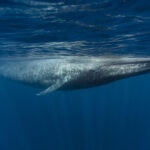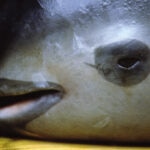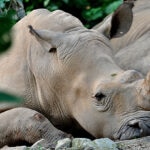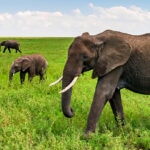These are the twelve endangered animals around the world in 2025
Human impact on ecosystems and climate change have caused numerous species to become extinct or endangered, resulting in irreparable damage to biodiversity. According to the IUCN Red List of Threatened Species, nearly 50,000 of the 172,620 species listed are endangered. These figures put the planet on the verge of what some scientists have called the sixth mass extinction.

It may be hard for many to imagine that their generation could witness the start of the permanent disappearance of some animal and plant species from Earth. This tragedy is all too real, to the extent that it appears to be part of the planet’s sixth mass extinction. According to a study by scientists from the Massachusetts Institute of Technology (MIT) based on current carbon dioxide emissions, the next mass extinction could occur within 80 years – around the year 2100. What will it depend on? On the ocean absorbing 310 billion tons of carbon dioxide.
What is an endangered animal?
Endangered animals are species that are at risk of disappearing due to a variety of threats.
Climate change is currently the direct cause of biodiversity loss (populations of birds, mammals, fish, reptiles and amphibians have declined by 69 percent since 1970). This is compounded by land and sea use; the direct exploitation of organisms; pollution and invasive species, according to the latest report by the Intergovernmental Science - Policy Platform on Biodiversity and Ecosystem Services.
What is defaunation?
Rodolfo Dirzo, a professor at Stanford University and the recipient of the BBVA Foundation Frontiers of Knowledge Award in Ecology and Conservation Biology, coined the term ‘defaunation’ to describe the loss or depletion of animal species in different ecosystems around the world.
Defaunation, therefore, refers not only to the extinction of species, but also to a significant decline in their population that alters ecological dynamics and the ecosystem health. It should be noted that this loss directly affects flora and essential ecological processes such as pollination and seed dispersal. Human activity, such as deforestation or climate change, has accelerated this process, highlighting the urgency of adopting conservation measures to protect biodiversity and save these species at risk.
Causes of the first extinctions
When we talk about species that have gone extinct, we need to go back millions of years. Sadly, the data show that the periods between species dying out are shortening and that their disappearance is happening at an unrelenting pace. According to Robert Watson, the President of IPBES: “The health of ecosystems on which we and all other species depend is deteriorating more rapidly than ever.” Notably, the planet is experiencing the greates' t loss of life since the time of the dinosaurs, with the number of animals going extinct rising inexorably.
The first great extinction, also known as the Late Ordovician mass extinction, occurred around 443 million years ago and lasted between 500,000 and one million years. During that period, 86 percent of the species that existed at that time (mainly marine species) disappeared from the face of the planet. The cause of the extinction stemmed from the glacial period or the decrease in the amount of oxygen available for the survival of many species.
Meanwhile, the second great extinction, or the Late Devonian mass extinction, took place three hundred sixty-seven million years ago. It lasted three million years, during which 82 percent of the planet’s species disappeared. The proliferation of algae following the emergence of terrestrial plants, which released nutrients into the ocean when disturbing the soil, was largely to blame. The algae, by absorbing oxygen from the water, led to the disappearance of much of the planet’s fauna.
Turning our attention to the third great extinction, we must go back 251 million years. Also known as the Permian–Triassic extinction event, it lasted one million years and resulted in the disappearance of 96 percent of the species present on the planet. The cause? Volcanic activity. According to scientists, this may have contributed to the disappearance of 76 percent of the species of the Triassic-Jurassic era, marking the fourth great extinction.
The fifth great extinction event occurred 65 million years ago and wiped out the dinosaurs and many other organisms on Earth. Also known as the Cretaceous–Paleogene mass extinction event, it resulted in the disappearance of 76 percent of species. The impact of a large asteroid on the Yucatán Peninsula (Mexico) brought an end to the age of the dinosaurs.
Endangered animals, in figures
According to the IPBES Global Assessment Report on Biodiversity and Ecosystem Services, more than one million animal and plant species are at risk of extinction. At present, the International Union for Conservation of Nature’s Red List of Threatened Species—a critical indicator of the health of global biodiversity, based on assessments of numerous groups of species including mammals, amphibians, birds, reef-building corals, and conifers—shows that out of the 172,620 species included on the list, more than 48,600 are threatened with extinction. What this means is that 28 percent of all species assessed to date are under threat.
Of this total, 41% are amphibians, 34% conifers, 44% reef-building corals, 26% mammals, 21% reptiles, and 11% birds. Of all the species assessed and included on this list, 129,775 belong to the animal kingdom. Currently, 33,600 animal species are threatened, meaning they are either vulnerable, endangered, or critically endangered.
Three species of Arctic seals have come close to extinction, according to the latest update of the IUCN Red List of Threatened Species, while more than half of all bird species worldwide are in decline. However, there is also hope for some species: the global population of green sea turtles is recovering thanks to conservation efforts.
Causes of species disappearance
- Human activity is to blame for the extinction of many animals, driven by illegal hunting, deforestation, and the destruction of their natural habitats. For example, anthropogenic causes are behind the disappearance of certain birds: 1,256 (11.5 percent) of the 11,185 bird species assessed are globally threatened, according to the IUCN Red List. Sixty-one percent of bird species show declining populations—an estimate that has increased by a troubling 44 percent. The most common cause of declining bird populations is the loss and degradation of their habitats, largely due to agricultural expansion and intensification, and forest exploitation.
- Climate change. Greenhouse gas (GHG) emissions have doubled since 1980, raising global average temperatures by at least 0.7 degrees Celsius, causing climate change to affect nature not only at the ecosystem level but also at the genetic level of species. For example, according to the IUCN Red List, the main threat to Arctic seals is the loss of sea ice caused by global warming. This has led the hooded seal (Cystophora cristata) to move from the Vulnerable to the Endangered category, while the bearded seal (Erignathus barbatus) and the harp seal (Pagophilus groenlandicus) have shifted from Least Concern to Near Threatened.
Against this worrying backdrop, the United Nations Conference on Biological Diversity (COP15) approved the creation of a global biodiversity framework consisting of four targets: to halt human-induced species extinction; to ensure that biological diversity is sustainably used and managed and that nature’s contributions to people, including ecosystem functions and services, are valued, maintained and enhanced; to guarantee that all benefits arising from the utilization of genetic resources and digital sequence information on genetic resources are shared fairly and equitably; and to ensure that adequate means of implementation to fully apply the Framework are equitably accessible to all parties. Conservation efforts also focus, paradoxically, on reducing certain invasive species due to the threat they pose to some ecosystems.
These are the 12 most endangered animals on the planet, and could disappear within the next twelve years:
The chimpanzee
High levels of poaching, infectious diseases, rapid population growth in Sub-Saharan Africa, the introduction of industrial agriculture (which requires deforestation), and habitat loss and degradation from expanding human activities have significantly reduced the population of chimpanzees in the last 20 to 30 years, with further declines expected over the next 40 years. The maximum population decline between 1975 and 2050 is expected to exceed 50 percent, which is why they are considered an endangered species. Fruit makes up roughly half of chimpanzees’ diet, which they usually supplement with terrestrial herbaceous vegetation, leaves, stems, seeds, flowers, bark, pith, honey, fungi, sap, eggs and animal prey, such as insects and medium-sized mammals. They are the most carnivorous species of the great apes.

The tiger
Considered an endangered species, the tiger is one of the species whose population has declined over a 30 year period in at least nine of the 13 countries that had existing tiger subpopulations at the start of the assessment period. Wild pigs and various species of deer are the two main types of prey that make up most of the tiger’s diet. When large prey populations are depleted, tigers resort to birds, fish, rodents and insects. Existing subpopulations of tigers are found in tropical, subtropical and temperate forests in South and Southeast Asia, and in temperate evergreen forests in Russia and China. Tigers are habitat generalists and have adapted to a variety of different habitats, including equatorial rainforests and mangroves in India and Sumatra.

The blue whale
Esta especie ha registrado una reducción en los últimos años del del 89%-97%. This species has seen a decline in recent years from 89 percent to 97 percent, putting the blue whale in critical danger of extinction. The drastic decline in the former Antarctic population is particularly noteworthy. Blue whales feed almost entirely on small crustaceans. Regarding their migratory patterns, some species live in habitats with high productivity throughout the year, while others embark on long migrations from tropical waters to feeding areas in high altitudes.

The lemur
There are currently over 80 species of lemurs that are critically endangered or endangered, and over 30 species considered vulnerable, including the golden lemur and the ring-tailed lemur. The main cause of their population reduction is habitat loss from slash-and-burn agriculture and the burning of bamboo – an important source of food for this species. Hunting is another factor contributing to the decline of these animals.

The vaquita
Found only in the northern Gulf of California, Mexico, the vaquita is a critically endangered species, with an estimated total population of around 10 individuals. The vaquita, which lives in marine environments at depths of less than 50 meters, feeds on a variety of fish, squid, and crustaceans.

The Sumatran rhinoceros
This species is classified as critically endangered due to severe population declines of more than 80 percent over three generations, as well as a continued decrease of at least 30 percent over 10 years, with only around 250 adult individuals remaining. It is estimated that in all likelihood (probability of 90%), the Sumatran rhino will be extinct within 60 years, largely as a result of poaching and habitat loss. This species inhabits tropical forests, is mainly found in mountainous areas near water sources, and moves depending on the season.

The western gorilla
While previously a relatively abundant species, with a wide geographic range, the western gorilla is now critically endangered, with its population having fallen by more than 80 over three generations. This is the result of illegal hunting, disease, and habitat loss. It is projected that the western gorilla population will decline by more than 80 percent over three generations up to 2071, due in part to the increasing conversion of its habitat into industrial agriculture and the effects of climate change. Western gorillas are diurnal and semi-terrestrial. They build nests to sleep in every night, usually on the ground though sometimes in trees.

The pangolin
Several types of pangolins are endangered, including the Indian and Chinese pangolins. Populations of this species could decline by a further 50 percent over a three-generation period (from 2019 to 2043) due to overexploitation. This animal is hunted for local consumption throughout most of its range and is being increasingly targeted by international trafficking—mainly for its scales—destined for foreign markets, particularly China. There appears to have been a shift in trafficking activity toward this species. Changes in law enforcement to the level needed to prevent overexploitation are unlikely to occur within three generations, although current demand-reduction efforts in key consumer countries for Asian pangolin products and derivatives are proving effective, which could theoretically lead to a decrease in its capture.

The titi monkey
This animal is critically endangered, with population declines estimated at more than 80 percent over the past 25 years. The main reasons are the massive deforestation of its preferred habitat due to increasing pressure from human population growth and the relentless growth of agriculture. It is a monogamous species that lives in small family groups and feeds primarily on fruit and insects.

The African elephant
This animal is critically endangered. Analysis of estimates from 131 locations throughout the species’ range shows a reduction of more than 80 percent in the continental population over the past three generations (93 years), a decline considered likely to be irreversible. The main cause of this population decline is habitat loss due to human population expansion.

The red wolf
Although the red wolf became extinct in the wild in 1980, it was reintroduced by the U.S. Fish and Wildlife Service (USFWS) in 1987 in eastern North Carolina. In the early 2000s, the total population within the reintroduction area included over 150 animals. By 2016, the USFWS began restricting reintroduction efforts in federally owned public land in Dare County, North Carolina. The area cannot support more than 20 to 30 wolves. If such restrictions are lifted, wolves living outside of this area would likely receive little to no federal protection or be captured. Human-induced mortality is one of the main threats to this species’ survival in nature.

The common hamster
This species is classified as critically endangered, mainly because of a 50 percent annual reduction in its reproduction rate. This decline is expected to continue and could cause the species to disappear within the next 17 years. The common hamster’s range has decreased in nearly all European countries and in Russia. Its original habitat is the steppe and fertile grasslands, but it has successfully expanded into a variety of habitats such as meadows, farmland (especially cereal crops) and the edges of fields and roads, as well as fallow areas with shrubs on farms. They are also frequently found in gardens and orchards. Their diet mainly includes the green parts of plants and seeds, supplemented with invertebrates and occasionally, small vertebrates.

United Nations Sustainable Development Goal 15: halt biodiversity loss
One of the United Nations 17 Sustainable Development Goals focuses on life on land, aiming to manage forests sustainably, combat desertification, halt and reverse land degradation and stop biodiversity loss. BBVA has also committed to this goal, taking action to protect forests.
What other actions can be taken to preserve ecosystems? Many simple steps can add up to significant results. Recycling, consuming local and sustainable products, preventing food waste and reducing energy use through efficient heating and cooling systems are some of the recommendations.
It is also essential to be respectful of wildlife and only participate in ecotourism activities that are organized ethically and responsibly to avoid disturbing wildlife. Proper management of protected areas is critical, as they contribute to healthy ecosystems, and in turn to human health.